Tom's Back To School Guide: Gear for Work
The Big Guns of Business
By: Chris Angelini
There’s a time and a place to build affordable dorm-room workstations for high school and undergrad course work. But what if you’re looking for a stronger, faster, more potent hardware setup capable of heavier lifting? No doubt the money will flow more freely as you search for the big iron. And any time you’re laying down a larger investment, it becomes increasingly important to make sure the chosen hardware is right for the job.
We couldn’t exactly built a budget business box and show all of that restraint in our hardware choices without then piecing together a proper powerhouse, now could we? After all, a work machine doesn’t have to be boring. So we threw size, performance, and for the most part, pricing worries out the window.
Barebones Platform: Supermicro SuperWorkstation 7045A-C3B
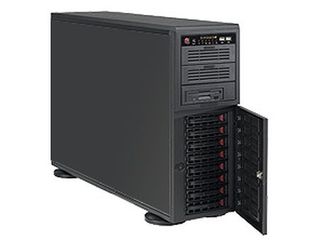
This ready-for-action black box sets the stage for the rest of our workstation build by combining the chassis, motherboard, power supply, and backplane to which everything else will attach. It’s not that we got lazy and didn’t want to pick those components separately. Rather, we like the pieces Supermicro put in its 7045A-C3B, and the fact that the configuration is almost ready to go simply sweetens the deal.
Inside the chassis, you’ll find Supermicro’s X7DCA-3 motherboard with two 771-pin sockets supporting Intel’s quad-core 5400 series and dual-core 5200 series Xeons. We debated whether to go with this configuration, which employs the Intel 5100 (San Clemente) chipset, or a system with the 5400 (Seaburg) core logic. Both chipsets support two processors, but the 5400-based machine requires FB-DIMM memory, while the 5100 works with DDR2. Also, the 7045A-C3B includes a SAS controller, whereas Supermicro’s Seaburg box doesn’t. Unfortunately, going with San Clemente also means giving up the dual PCI Express 2.0 x16 slots enabled by Seaburg.
The board’s vital specs, briefly, include twin 1,333 MHz FSBs, six DIMM slots supporting up to 48 GB of 667 MHz DDR2, an LSI SAS controller offering RAID 0, 1, and 10 support, dual Gigabit controllers with I/OAT support, and plenty of expandability. Supermicro includes an 865 W, 80 PLUS-certified power supply, which should be plenty for any configuration of processors, memory, graphics, and storage you can install.
Processor: Intel Xeon L5420 @ 2.5 GHz
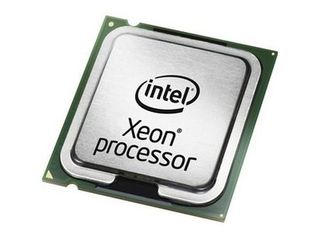
Just because we’re building a box capable of massive muscle doesn’t mean it needs to feature the most beastly CPUs. Intel recently updated its Xeon 5400 series family with a couple of low-power models. The pair retains the feature set of Intel’s Harpertown design, yet drops the quad-core chip’s TDP to 50W.
We picked the faster of the two new offerings: Intel’s Xeon L5420. Despite the processor’s modest thermal output, it still runs at 2.5 GHz, includes 12 MB of L2 cache, and operates on a 1,333 MHz bus. Intel’s launch prices were in the $380 range, but street prices are a bit higher; as such, we’d recommend grabbing one of the L5420s now. See how the workstation runs with four cores, and then upgrade the second socket as you start running more applications able to utilize additional computing horsepower.
Graphics: AMD FireGL V7700 512 MB

Tough call here, as the graphics solution you pick for your workstation is going to depend on the applications you’ll be running. Titles like 3ds Max and SolidWorks call for a true professional card, while more mainstream apps and games are better served by today’s desktop boards. The situation is doubly complex, because AMD and Nvidia have both recently released fresh desktop architectures that haven’t yet translated to the professional space.
If your needs are limited to gaming or video work, a new Radeon HD 4870 or GeForce GTX 260 would probably be fine, but we’re still working towards a true workstation that’s able to benefit from the heavily optimized and thoroughly tested driver packages put out by AMD’s FireGL and Nvidia’s Quadro FX teams. Although it means stepping back one generation, there’s still plenty of value in cards like AMD’s FireGL V7700, which is quite nearly faster than any of the company’s other workstation cards, at a price point under $1,000.
The V7700 is a dual-slot card, but that’s fine, since our Supermicro platform really only has the PCI Express connectivity for a single board. It centers on the same RV670 GPU found on AMD’s Radeon HD 3870, and is driven by 512 MB of GDDR4 memory on a 256-bit interface. Like most high-end boards, the V7700 sports two digital display outputs. In this case, however, one is a DisplayPort connector and the other is a dual-link DVI port. If you’re looking for monitor ideas to match the new DisplayPort interface, Dell’s 2408WFP, 2709W, and 3008WFP LCDs are all attractive choices.
Storage: Seagate Cheetah 15K.6/Barracuda ES.2
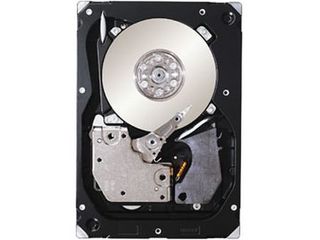
Our decision to include SAS support was a deliberate one. A SAS controller is flexible in that it’ll take SAS and SATA drives, but a SATA controller only works with the desktop-oriented interface. Why care about supporting SAS at all? SAS drives are the high-performance, high-availability, high-reliability replacements for SCSI, and we like having the option to build an SAS array for heavy lifting, and one mirrored SATA array for near-line storage, with both connected to the same backplane.
Given the 7045A-C3B’s eight hot-swap bays, we’d be more than happy with a pair of Seagate Cheetah 15K.6 SAS drives sporting 300 or 450 GB of space in a RAID 1 setup, and four 750 GB or 1 TB Barracuda ES.2 s in a RAID 10 setup. The combo is expensive, yes, but compared to an all-SAS or all-SATA configuration, you get the best of both serial interfaces, from speed to reliability to overall cost.
More Loose Ends
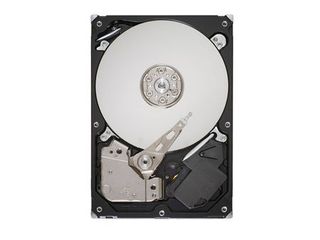
The same miscellaneous components needed to wrap up our diminutive back-to-school desktop apply here in a different way. First, skip the wireless networking: if you’re spending big bucks to build a high-performance workstation, you’re likely moving lots of data. Stick to the integrated Intel Gigabit Ethernet controllers on Supermicro’s board.
And instead of skimping on a $25 dual-layer DVD writer, check out LG’s GGW-H20L Blu-ray/HD DVD drive, able to write CDs, DVDs, and Blu-ray media, and read the same formats, plus HD DVD discs. Though still pricey at $279, the drive is much more affordable than the previous generation of Blu-ray recorders, and decidedly faster at up to 6x speeds (215 Mb/s).
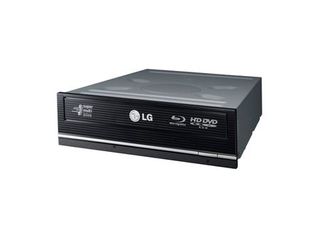
As for memory, we’re again more interested in default frequencies and timings than overclocking headroom. A couple sticks of Super Talent’s T667RB2G4 — a 2 GB, 667 MHz registered module — does the trick nicely.
Pricing on the higher-end gear in this beefier workstation is a little more volatile, but expect to pay close to $4,500 for the Supermicro platform, one Xeon L5420, AMD’s FireGL V7700, two 450 GB Cheetahs, four 740 GB Barracuda drives, the LG Blu-ray writer, and four gigs of registered DDR2-667 memory. If that’s a tad too pricey, shaving down the storage subsystem and swapping out the FireGL card for a desktop board will cut at least $1,000 off of the bottom line.
Current page: The Big Guns of Business
Prev Page More Small Form Factor Parts Next Page Budget Laptop RoundupStay on the Cutting Edge
Join the experts who read Tom's Hardware for the inside track on enthusiast PC tech news — and have for over 25 years. We'll send breaking news and in-depth reviews of CPUs, GPUs, AI, maker hardware and more straight to your inbox.
-
njalterio Haha.....as a university student who will be heading back to school for my final year this August I must say so much of this is unnecessary.Reply
First off, if you are living at home and/or still in high school absolutely none of this is necessary. Use the home PC.
Second, If you are going away to college, then get either a cheap laptop or desktop and one ethernet cable. End of story. You will be able to print through your university's printers, and most likely you will be able to get very cheap software from the university. I can buy Vista Ultimate for $15. Norton Antivirus is free.
Third, do not buy Apple as it is way to expensive. As a college student your money would be much better used elsewhere. This article did not do justice to Lenovo at all. I highly recommend a ThinkPad T61. (I priced a 2.4 GHz dual core and 4 GB of RAM and 100 GB hard drive for around $1100). The same hardware configuration would cost over $3000 in a Mac.
4) DO NOT SPEND MONEY IN WARRANTY/REPAIR/TROUBLESHOOTING SOFTWARE OR SERVICES! At your university there will be many smart and intelligent people who will be able to help you out for free. Depending on the size of your university, there will probably be a free tech support service somewhere on campus.
-
What about those of students who are in engineering and need laptops that can handle lots of CAD, a simple budget laptop will not do. Look at Mississippi State's requirements in the engineering dept for entering freshman, a required 256 bit gpu and they recommend 512 bit. Just wondering if we could see something more high end for the technical fields, this is a great read thoughReply
-
njalterio I am also a student in engineering and I am quite familiar with the computer hardware required. If you are an engineering major, then you should invest $200 more to get a laptop or desktop with discrete graphics.Reply
I was pointing out that a getting a $3000 laptop is ridiculous, and definitely should not be considered "vital" for back to school. -
mitch074 Overall quite nice, but:Reply
- getting a Thinkpad may be more expensive, but it has two enormous advantages: it's extremely sturdy, and it is easily serviceable; if you want to keep your laptop for 3 years, you'll have a better time with it than any other laptop series
- Google Docs is nice, but it requires an always-on Internet connection. I can't, for the life of me, understand why there's no OpenOffice.org mentioned anywhere: it's free, it's powerful, it's stable, and it's available for all systems cited (yes, even MacOS X - Aqua version will be out in september).
- if all you do is type notes and browse the Web, a netbook may just be what you need: lighter, smaller, cuter, faster to boot. It is also far less expensive. The MSI Wind and it's rather large screen and keyboard are a good thing, you can still get an USB keyboard and connect it to a flat screen TV to turn it into a more comfortable workstation in your dorm room.
For those of you telling me that 'Vista is required', bull: the Apple one runs OS X, you can run Linux or XP without trouble in such a context (yes, there is Java and Flash support under Linux; even Google Earth runs very well). -
gaiden I hope you chain that 24" LCD to an iron desk in your drom room. Best things for college are FREE or Second hand, no need to pay premium $$$ for new stuffs. I pay for my own tuition and all my other expense, so there is no way a 'regular' student or their parent will consider buying something this big and pricy. PC component side are decent however.Reply
The dude above who asks for a Laptop/notebook to work on CAD, maybe a Dell Vostro 1500 and possibly runs in XP. CAD doesn't have all the support from Vista yet...i don't think. Basically if you are all work and no play just make sure you get a Core 2 Duo CPU with a Quadro card and 3-4gb of RAM. If you play some games get a C2D/3-4gb RAM and a Nvidia 8600 and up instead of a Quadro
gl -
cangelini gaidenI hope you chain that 24" LCD to an iron desk in your drom room. Best things for college are FREE or Second hand, no need to pay premium $$$ for new stuffs. I pay for my own tuition and all my other expense, so there is no way a 'regular' student or their parent will consider buying something this big and pricy. PC component side are decent however. The dude above who asks for a Laptop/notebook to work on CAD, maybe a Dell Vostro 1500 and possibly runs in XP. CAD doesn't have all the support from Vista yet...i don't think. Basically if you are all work and no play just make sure you get a Core 2 Duo CPU with a Quadro card and 3-4gb of RAM. If you play some games get a C2D/3-4gb RAM and a Nvidia 8600 and up instead of a QuadroglReply
Ain't it the truth. Nothing tweaked me more than when I had an old-school HP notebook nabbed from my office on-campus during a two minute bathroom break. A shame you have to lock everything down just to let it out of your sight for a second.
-
In my opinion, if you don't play or make games, do scripting or anything else that may take lots of processing power you dont need to spend more than like... 300$ on a computer. To cut down on the price I would get 1gb 667 mhz (15$) of RAM, a Pentium Dual-Core (about 60$) and a PCI video card for about 50$. It would no doubt be more than enough for surfing the internet, watching movies, and using MS Word.Reply
-
mbmcavoy For students in a technical field, (engineering, computer science, etc), a Windows laptop probably is best due to specialty software/hardware needs. But for the majority of students in non-technical fields, I'd highly recommend the MacBook.Reply
Sure it seems more expensive if you compare hardware spec sheets, but the OS and included Apps make it a worthwhile package. Plus, iWork is much cheaper than MS Office. (Oh, and currently a free $300 iPod Touch for students and teachers sweetens the pot!)
General setup and maintenance issues are much less, so you'll have more time for actual studying - especially important for the non-techie! And while Windows has "sleep" features, I've never had consistent success with it. The sleep on my MacBook is bulletproof, and it wakes up in about 1 second. Perfect for the mad dash between classes!
Of course, if you are a non-techie, you probably aren't reading THG... :)
